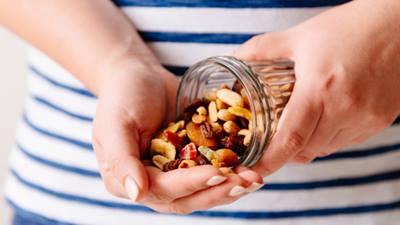

Dave Brummert, NSCA-CSCS, NASM-CPT
Exercise Specialist
Intermittent fasting (IF) is the process of manipulating your calorie intake based on a time schedule. Basically, it means condensing your meals for the day into a smaller window of time; for example, eating all of your meals between 10:00 am and 6:00 pm.
Why Fast?
When you eat less frequently, your body doesn’t have as many spikes in blood sugar. So, when you do eat, your body can better control your blood sugar levels. That’s very important for those with diabetes as well as people who are overweight.
Intermittent fasting also reduces the amount of inflammation in your body. There’s a cycle where chronic, low-grade inflammation in the body can cause fat cells to grow, and then the fat cells themselves release substances that cause even more inflammation. Intermittent fasting makes your body produce more anti-inflammatory substances (like adiponectin) and less proinflammatory substances (like Tumor Necrosis Factor alpha (TNF-a) and Interleukin-6).
Like many variations of fasting, intermittent fasting reduces body fat, mainly by causing a decrease in the number of calories you eat during the day. Another important benefit is that intermittent fasting improves cell clean up. Known as autophagy, this process acts as the body’s way to declutter itself. Anything that isn’t working properly gets cleaned out so that the healthy cells can do their work normally. This is essential in helping to prevent abnormal cell growth that can lead to diseases like cancer. Intermittent fasting also can improve your cholesterol and triglycerides, helping to reduce your risk of cardiovascular disease.
Why Is IF Better Than a Regular Diet?
Depending on the diet, intermittent fasting may reduce the amount of muscle loss and avoid the decrease in metabolism that’s often seen with longer-term calorie restriction (like eating 1,200 calories every day for 3-4 months). Nothing in particular says it is better, compared to any other. It’s just another tool to try, and one that happens to be very effective.
Types of Intermittent Fasting
The most common form of IF is the 16/8 fasting method, where you eat all of your calories during a predetermined 8-hour window and eat nothing for the remaining 16 hours of the day. Alternate day fasting (ADF) is another type of fasting method, where you eat at normal times one day (ex: 2,000 calories) and then either eat no calories the next day, or no more than 25 percent of your typical calorie intake for a day (ex: 500 calories).
An actual 100 percent fast every other day is uncommon, and could cause some loss in muscle mass over time. The 16/8 fast seems to fit our normal work schedules pretty nicely, and has all of the benefits of fasting without getting to the point of muscle loss. People who have done IF before may see benefits from longer fasts as their bodies adjust to the routine. In the end, pick a window that works with your schedule and lifestyle.
Who Should Try Intermittent Fasting?
Intermittent fasting can be effective if you are interested in fat loss, changing your body composition or improving your overall health and reducing risks of diabetes, heart disease, etc. Because the concept and application are pretty simple, it’s also a good tool for those who have had a hard time adhering to other diets.
However, if you have uncontrolled blood sugar issues or a history of eating disorders, you are probably not an ideal candidate for intermittent fasting. Likewise, if you are an explosive or power athlete, your performance may suffer, depending on the timing of your workouts/competitions and your feeding window.
Getting Started with IF
If you use the IF method, you should still pay attention to what you eat. It is still important to get vitamins, proteins, minerals, fiber and hydration. IF creates a calorie deficit because you are limiting eating opportunities. Although that allows you to eat two larger meals that may be less healthy and tastier, while keeping a calorie deficit, your body still responds to what you put into it. So cleaner, healthier food is better than junk food.
If your main goal is health benefits and not loss of body fat or weight, counting calories is probably not necessary. As you move closer to your goal, make sure you are getting your macronutrients.
There’s an adjustment period when you start using an IF method and you may become lightheaded as your body adjusts to longer periods without food. If you feel an overwhelming need for food, or become nauseous or dizzy, eat or drink something.
Exercising is perfectly fine while fasting. If your main goal is to lose body fat, try working out at the end of your fast and right before your feeding window. You’ll burn calories when your body is already primed to be using fat as a main source of fuel, and you sensitize your muscles to the protein and nutrients you’re about to feed it. If you’re an explosive athlete, however, try working out in the middle of the feeding window so you’ll have available carbohydrates in your system that are vital for performance.
Intermittent fasting offers many health benefits. Take it slowly and experiment to see what method works best for you. Even as you strive to improve your health or lose weight, remember that your worth as a person is not tied to your body fat percentage or muscle mass. Be kind to yourself as you pursue the intermittent fasting journey.
